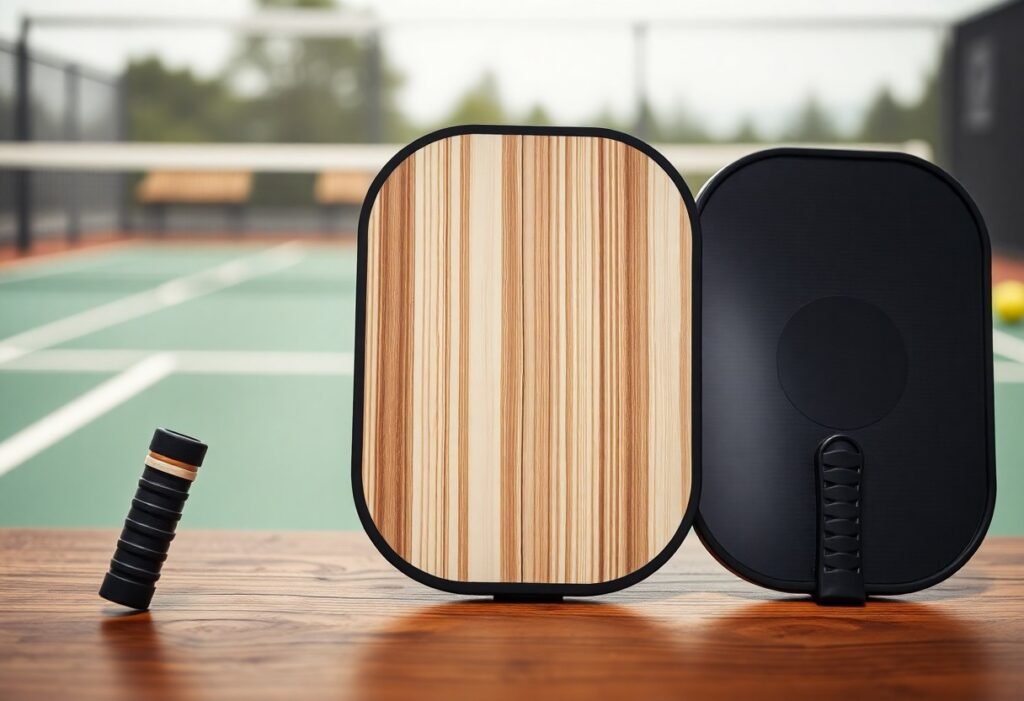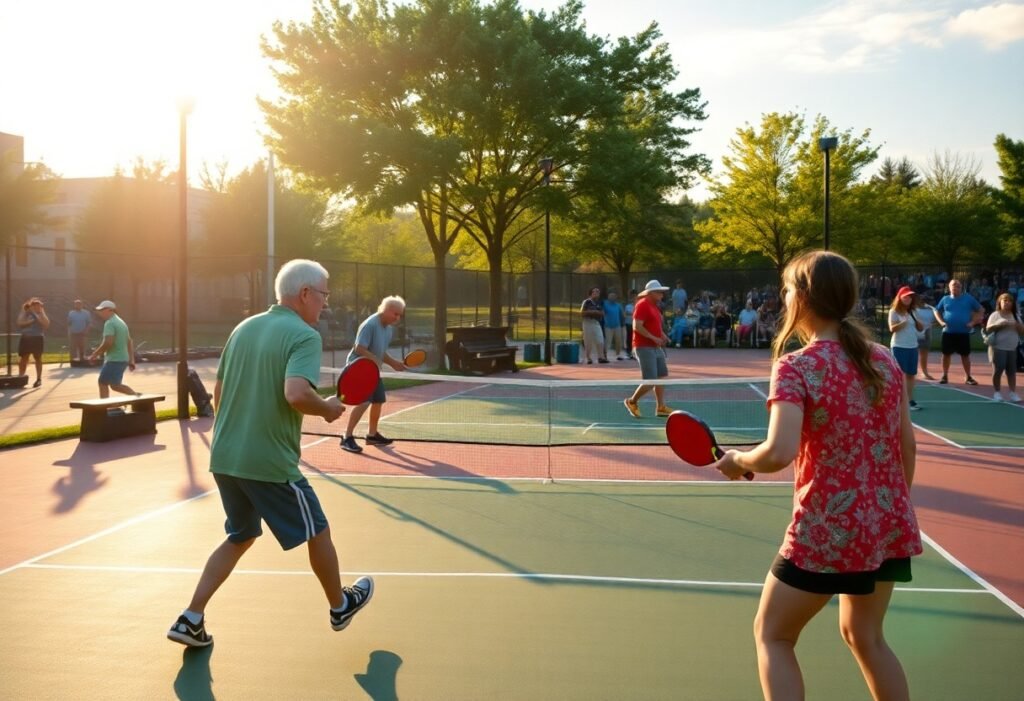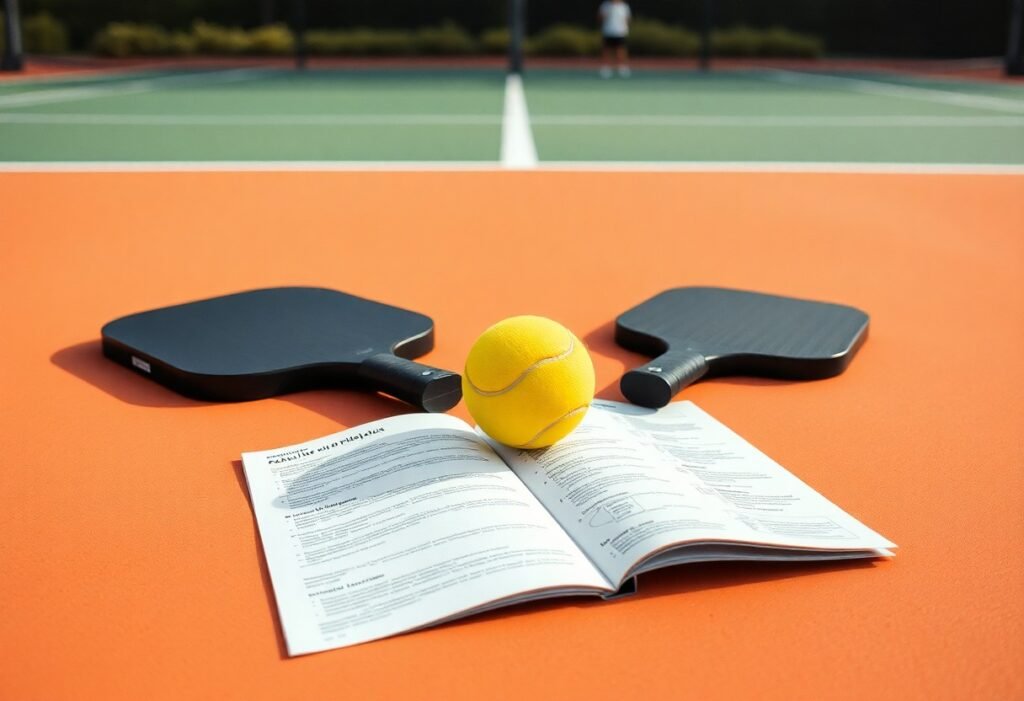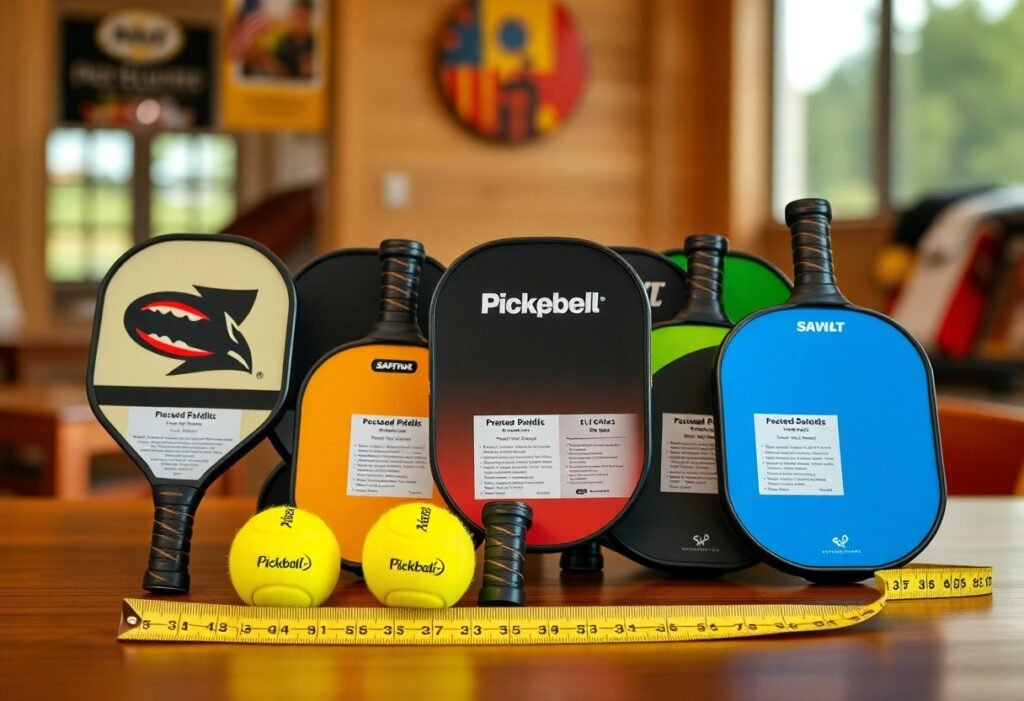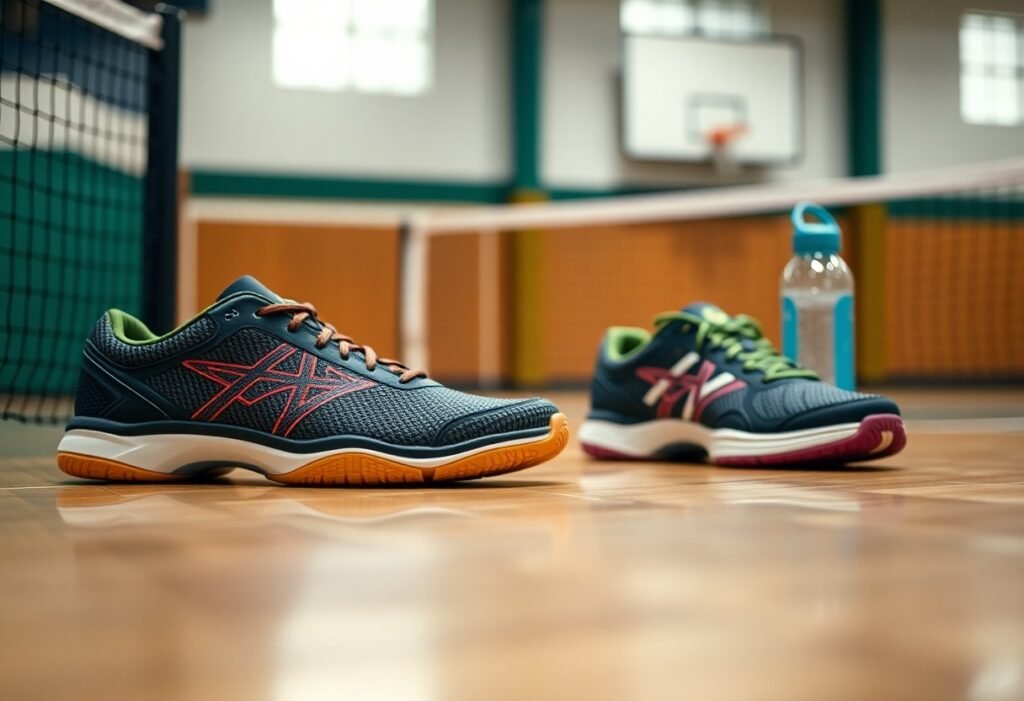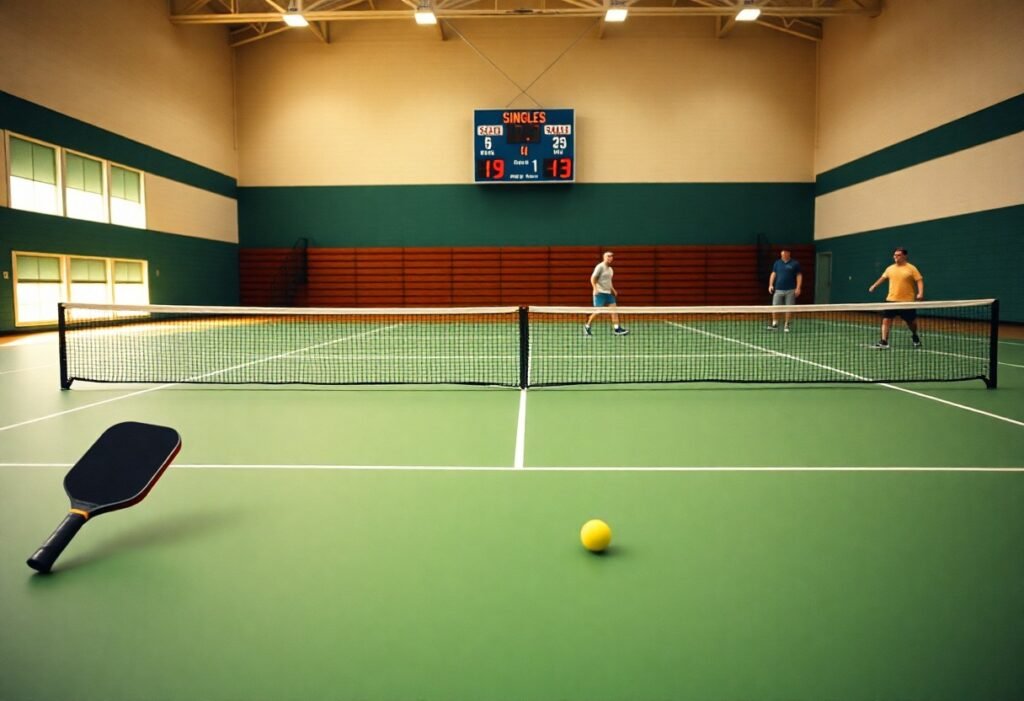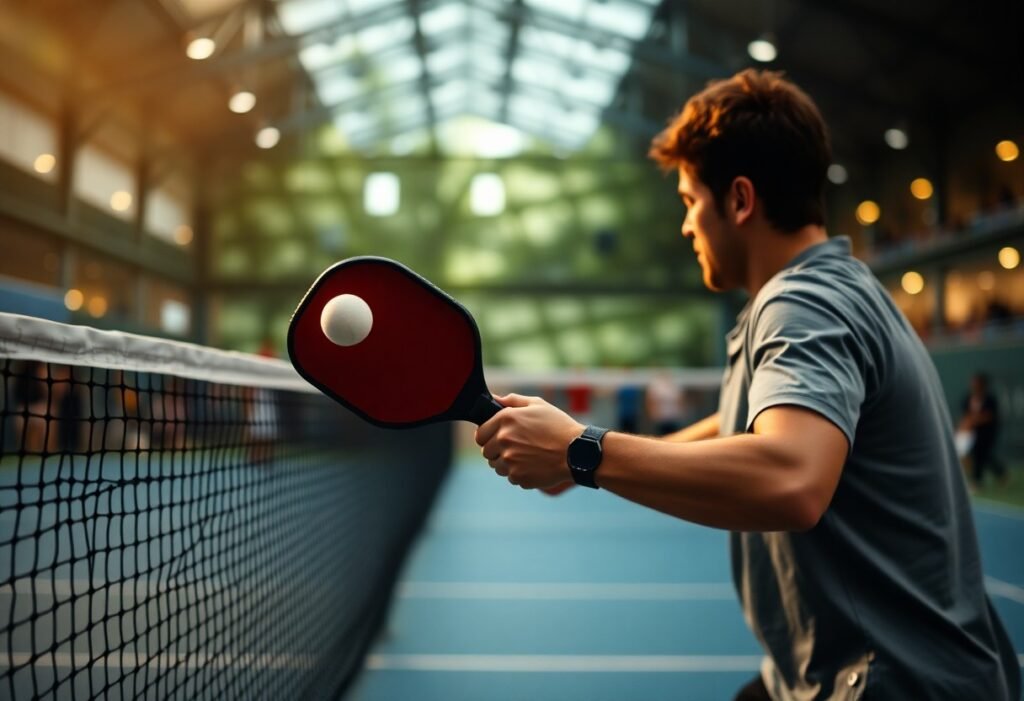Just understanding the differences between graphite, composite, and carbon materials can enhance your pickleball game significantly. Each material offers unique benefits that can affect your performance on the court, from weight and durability to feel and power. Choosing the right paddle is not just about preference; it can influence your control and energy on the court. By familiarizing yourself with these materials, you can make an informed decision that enhances your playing experience and helps you achieve your goals.
Key Takeaways:
- Graphite paddles offer a lightweight design and solid power, making them ideal for advanced players seeking performance.
- Composite paddles provide a balance of power and control, often featuring a textured surface for enhanced spin.
- Carbon paddles are known for their durability and lightweight nature, typically preferred for frequent play and long-term use.
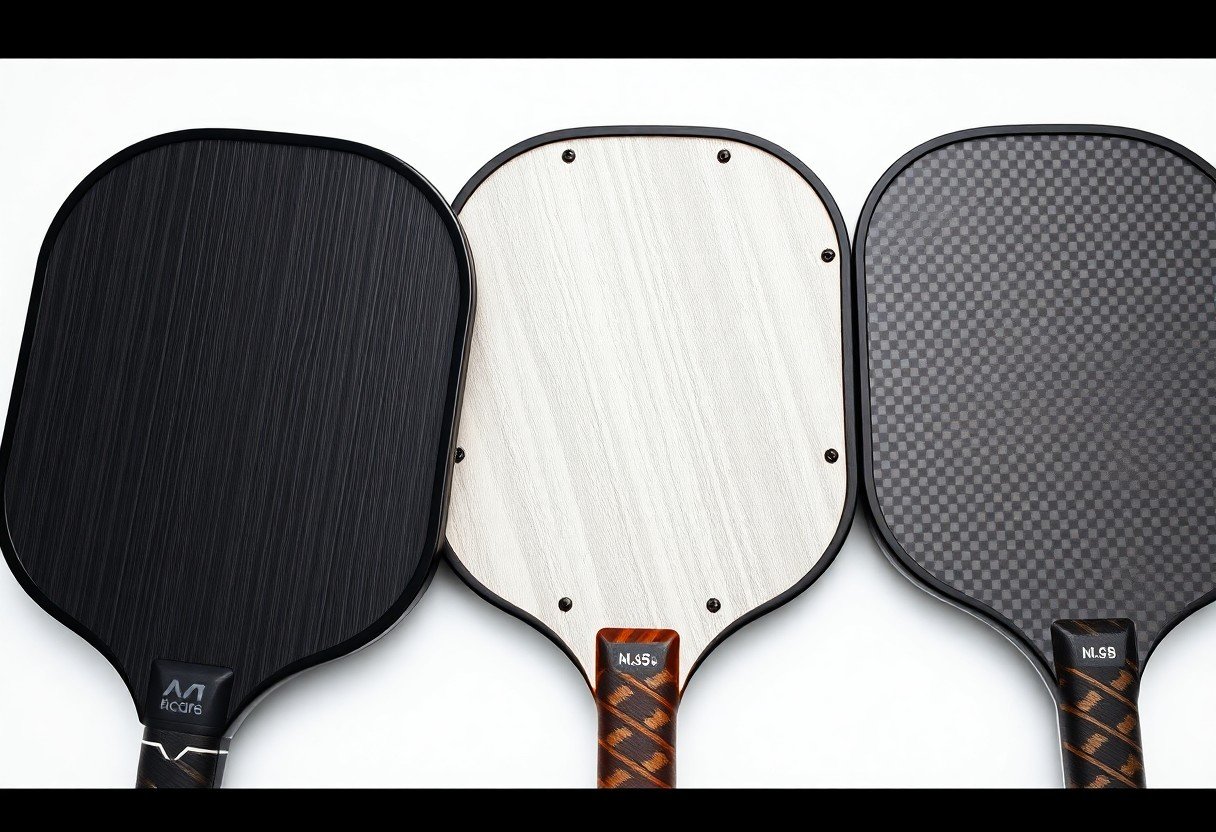
Understanding Pickleball Paddle Materials
Importance of Paddle Material
Your paddle material significantly impacts your gameplay style and performance. The right material enhances control, power, and overall feel, allowing for better shot-making and improved endurance during matches. Choosing the appropriate material can even reduce fatigue, making your time on the court more enjoyable and effective.
Overview of Popular Paddle Materials
Pickleball paddles are primarily made from three popular materials: graphite, composite, and carbon fiber. Each material comes with unique properties that cater to different playing styles. Graphite paddles are known for being lightweight and powerful, while composite paddles provide a balance of durability and control. Carbon fiber, on the other hand, offers a high level of responsiveness and strength.
Graphite paddles, typically weighing around 6 to 8 ounces, excel in delivering quick reaction times and strong hits, making them a favorite among competitive players. Composite paddles offer a versatile middle ground, featuring a wide range of thicknesses and textures that allow for variations in spin and control. Lastly, carbon fiber paddles provide exceptional stiffness and durability, often favored by those who prioritize performance over weight. Understanding these materials helps you select the right paddle that aligns with your personal style, ensuring optimal performance on the court.
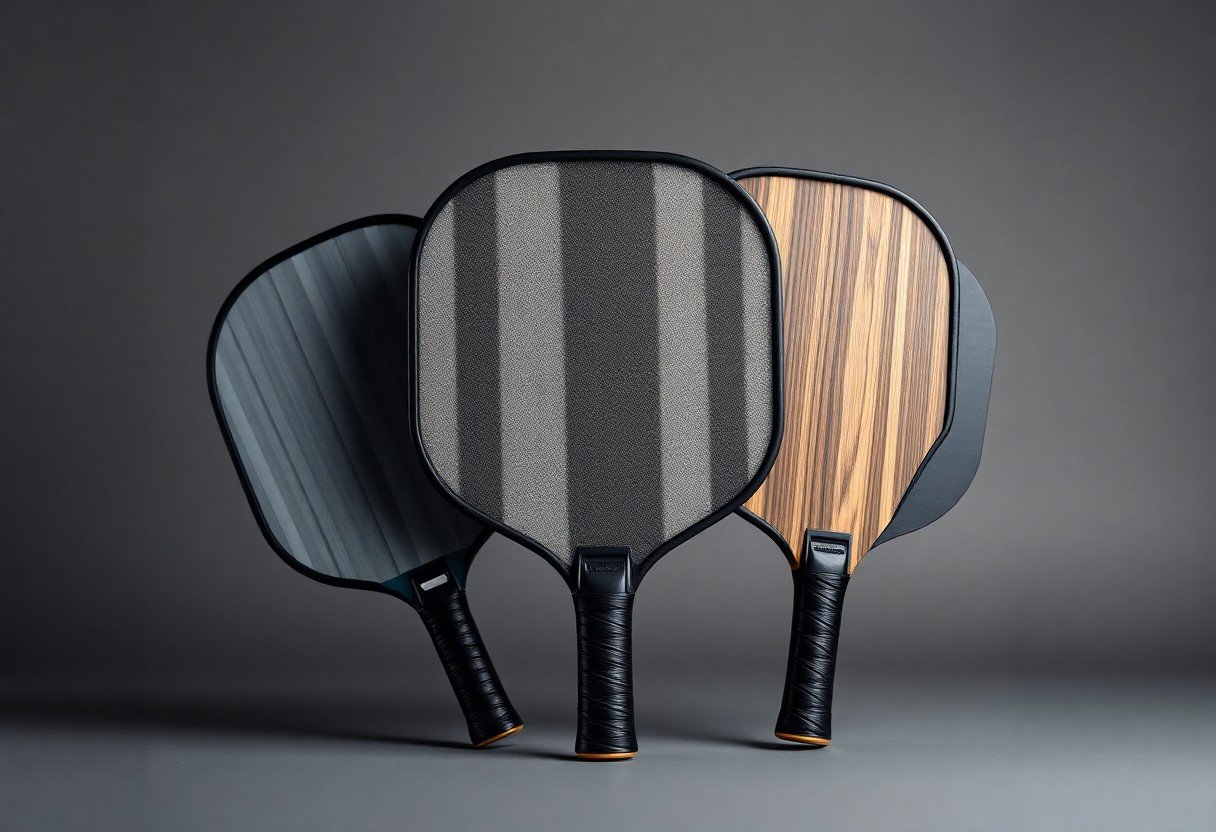
Graphite Paddles
Characteristics of Graphite
Graphite paddles are known for their lightweight construction, typically weighing between 7 to 8 ounces. This material allows for a high level of maneuverability and control, making it easier for you to execute quick reactions and sharp volleys. The surface texture of graphite can vary, affecting spin and feel, which can be tailored to your playing style.
Advantages of Graphite Paddles
Graphite paddles provide enhanced power and precision on the court. Their superior stiffness allows for greater energy transfer on impact, resulting in powerful shots. Additionally, the lightweight nature reduces arm fatigue, enabling you to play longer and with better focus.
The combination of lightweight and stiff properties means you can achieve faster swing speeds without compromising control. Many advanced players prefer graphite paddles for their ability to produce more pop while still maintaining touch, critical for executing delicate shots. You will find yourself better equipped to handle aggressive plays and respond effectively to your opponent’s strategies.
Disadvantages of Graphite Paddles
While graphite paddles offer numerous benefits, they can be susceptible to chipping and cracking if not handled properly. The fragility of this material means you must be cautious with your paddle, as impacts from hard ground or improper storage may damage it. Additionally, the higher price point can be a consideration for budget-conscious players.
This sensitivity to damage makes it crucial for you to select a protective case and transport your paddle with care. Many players find that the investment pays off due to the performance advantages, but be prepared for the maintenance required to keep your paddle in top shape for long-term use.
Best Uses for Graphite Paddles
Graphite paddles are best suited for intermediate to advanced players who prioritize speed and precision in their game. The balance of power and control makes them ideal for fast-paced matches where quick reflexes are vital. You’ll find them particularly effective in both singles and doubles play.
Definition of Composite Material
A composite material combines two or more constituent materials with different physical or chemical properties to create a product that possesses unique features. In pickleball paddles, composite materials typically include a blend of polymer and fiberglass or other materials, resulting in a well-rounded performance profile suited for various playing styles.
Advantages of Composite Paddles
Composite paddles offer significant benefits, including enhanced durability, improved ball control, and lightweight design. Players appreciate the balance between power and finesse, allowing for versatile play while minimizing vibration upon impact.
The durability of composite paddles means they can withstand the rigors of frequent use without easily chipping or cracking. Additionally, their design promotes better control over shots, enabling you to execute precise placements and spins. Lightweight construction helps reduce fatigue during extended sessions, enhancing your overall game performance.
Disadvantages of Composite Paddles
Despite their advantages, composite paddles can have drawbacks, including higher cost and potential limited power compared to graphite options. Their construction may not appeal to every player, particularly those seeking a powerful swing.
The higher cost associated with composite paddles can be a barrier for budget-conscious players. Additionally, while they provide excellent control, some players might find them lacking in the raw power needed for aggressive gameplay. As a result, if you prioritize strength over finesse, you may want to consider alternatives.
Ideal Contexts for Composite Paddles
Composite paddles are ideal for recreational play and players who value control and finesse over sheer power. They suit those looking to improve their precision while maintaining a comfortable grip.
If you often find yourself in competitive matches where ball placement and spin are paramount, a composite paddle can enhance your ability to execute strategic plays. Their combination of lightweight feel and control makes them perfect for both beginners learning the game and advanced players focusing on skill development in various contexts.

Carbon Paddles
Features of Carbon Fiber
Carbon fiber paddles are designed for exceptional performance, featuring a high-strength-to-weight ratio that allows for swift maneuverability on the court. The structure provides excellent stiffness, promoting greater power transfer during strokes. This material is also known for its vibration-dampening properties, enhancing feel and control in your game.
Benefits of Carbon Paddles
Choosing carbon paddles means opting for enhanced durability and performance. Their lightweight nature aids in increasing swing speed, while the material’s strength ensures longevity, making it a wise investment for serious players.
Furthermore, the vibration-dampening abilities of carbon fiber significantly improve your control over the ball, allowing for precise shots. Whether you’re performing a soft drop shot or a hard drive, the responsiveness of carbon paddles enables you to execute various strokes with ease, often resulting in better gameplay outcomes. Advanced players may find that these qualities enhance their overall competitive edge.
Drawbacks of Carbon Paddles
Despite their advantages, carbon paddles often come at a higher price point and may not be the best choice for beginners. Their fragility in extreme conditions can also be a concern, as they can crack or chip under significant stress.
While carbon fiber paddles offer superior performance, they require careful handling, especially in tough strokes or when playing on hard surfaces. This sensitivity means they might not be the ideal selection for those just starting out, who may benefit from more durable materials like composite or graphite, which can withstand wear and tear more effectively.
Situational Uses for Carbon Paddles
Carbon paddles shine in competitive play, making them ideal for advanced players seeking precision and speed. They excel in tournaments and high-stakes matches where every point counts.
If you’re playing in a more competitive environment, carbon paddles can elevate your game with their lightweight design and enhanced performance features. Perfect for players who rely on speed and tactical precision, they stand out during fast-paced matches. However, always consider your skill level and playing style when opting for a paddle, as the right equipment can significantly impact your performance and enjoyment of the game.
Comparing Paddle Performance
Paddle Material | Performance Characteristics
— | —
Graphite | Excellent for power; lightweight; provides good touch.
Composite | Balanced performance; offers a mix of power and control; durable.
Carbon | Exceptional control; reduces vibrations; slightly heavier.
Durability Comparison
Regarding durability, graphite paddles are less resistant to dings and damage compared to composite and carbon paddles. Composite paddles are known for their reinforced designs, making them robust against wear. Carbon paddles, while lightweight, possess a strong construction that enhances longevity. Their ability to withstand impact and rough play can be a deciding factor for frequent players.
Material | Durability Rating
— | —
Graphite | Moderate
Composite | High
Carbon | High
Weight Distribution Analysis
Weight distribution affects your swing speed and maneuverability. Graphite paddles typically feature a balanced weight, allowing for swift responses. Composite paddles may vary, offering head-heavy or evenly distributed options that suit different playing styles. Carbon paddles, often heavier, provide stability but can require more effort in quick exchanges, making this an important consideration based on your play style.
Precise weight distribution allows you to tailor your gameplay. A head-heavy paddle may deliver added momentum for powerful shots, while a lighter balanced paddle enhances your ability to react and control the ball during fast exchanges. Evaluating your technique and swing style can guide you to the ideal paddle weight distribution that aligns with your performance needs.
Playability and Comfort
Playability hinges on how comfortable you feel with your paddle in hand. Graphite paddles offer a degree of flexibility, enhancing touch, while composite paddles typically score higher in comfort thanks to shock-absorbing features. Carbon paddles provide excellent feedback, but their solid construction may feel less forgiving if you prefer softer touches.
Comfort translates directly to your performance on the court. A paddle that feels good in your grip can enhance your timing and reduce fatigue during extended play. Look for a paddle that matches your hand size, grip preference, and play style, as this will significantly influence your overall experience and effectiveness throughout matches.
Effect on Power and Control
If power and control matter to you, the choice of material makes a noticeable impact. Graphite paddles allow you to unleash maximum power, while composite paddles offer a balanced range, giving you both control and decent force. Carbon paddles excel in finesse shots, making them preferred by players focused on precision.
The impact of power versus control can significantly shape your strategy. Choosing a graphite paddle may yield explosive shots at the expense of control, whereas a composite option might allow for better placement on those tricky returns. Meanwhile, carbon’s focus on control can enhance shot accuracy, crucial for tactical play. Assessing your gameplay can guide you toward the paddle that complements your strengths and addresses your challenges.
Cost Considerations
Price Range of Different Materials
The price of pickleball paddles varies significantly based on the material used. Graphite paddles typically range from $75 to $200, offering lightweight performance and responsiveness. Composite paddles generally fall in the $50 to $150 range, balancing durability and playability for budget-conscious players. Carbon paddles can be on the higher end, starting around $120, with some premium models exceeding $250 due to their advanced construction and performance features. For a deeper understanding, check out Why Pickleball Paddle Materials Matter and How to Choose.
Value for Money Assessment
When evaluating paddles, consider what you’re gaining in performance versus the cost. Higher-priced graphite and carbon paddles may enhance your game with improved power and control, potentially justifying their cost if you play competitively. Conversely, composite paddles can offer a great balance of quality and affordability for casual players.
Investing in a higher-end paddle could lead to better on-court results, which can empower you to play more effectively. If you’re serious about improving your skills, opting for a premium paddle may provide the edge you need. However, weigh your frequency of play and skill level; if you’re a beginner, a budget-friendly option might suffice as you develop your game.
Longevity and Investment
The longevity of your paddle primarily hinges on materials and usage. Graphite paddles tend to show wear over time but can endure regular use for a couple of years, depending on your play intensity. Composite paddles generally offer excellent durability, lasting long enough for many recreational players. If properly maintained, carbon paddles can also serve as a worthwhile investment, providing advanced technology to bolster your gameplay.
In considering longevity, think about how often you play and your style. If you’re playing multiple times a week, investing in a more robust paddle might save you money in the long run, as you won’t need to replace it as frequently. Analyze your commitment to the sport, as a solid paddle can enhance your enjoyment and performance over countless matches.
Summing up
Taking this into account, when choosing between graphite, composite, and carbon pickleball paddles, consider your playing style and preferences. Graphite paddles offer excellent touch and control, while composite paddles provide a good blend of power and durability. Carbon paddles are lightweight and enhance ball feel. Each material has its strengths, so evaluate your requirements to find the paddle that best complements your game and enhances your overall performance on the court.
FAQ
Q: What are the main differences between graphite and composite pickleball paddles?
A: Graphite paddles are known for their lightweight and solid feel, providing excellent touch and control. Composite paddles combine materials like fiberglass with a core material, offering good durability and a broader sweet spot, often resulting in a bit more power.
Q: How does the weight of different materials affect paddle performance?
A: Graphite paddles are typically lighter, allowing for quicker swings and better maneuverability. Composite paddles may be slightly heavier, which can enhance power during strikes but may slow down reaction time.
Q: Which material is better for beginners in pickleball?
A: Beginners may benefit from composite paddles as they tend to offer a larger sweet spot and more forgiving play. This can help novice players develop their skills without sacrificing performance.
Q: Do weather conditions impact the performance of different paddle materials?
A: Yes, extreme temperatures can affect both graphite and composite paddles. Graphite may become brittle in very cold weather, while composite materials can be more resilient but might lose some stiffness in extreme heat.
Q: What is the lifespan of a pickleball paddle made from each material?
A: Graphite paddles generally have a longer lifespan due to their durability and resistance to wear. Composite paddles may wear down faster, especially if frequently used at high levels of competition, but can still last a significant amount of time with proper care.


